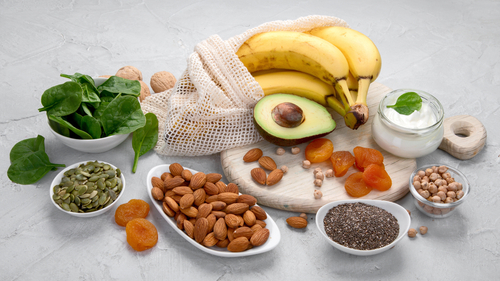Not All Calories Are Created Equal
We’ve been taught to count, cut, or obsess over calories—but calories alone don’t tell the full story. What matters more is where those calories come from. Proteins, fats, and carbohydrates—our three macronutrients—each play a unique and powerful role in how we feel, function, and fuel our lives. When these are balanced on the plate, the body responds with better energy, fewer cravings, more stable moods, and long-term vitality.
But balance doesn’t mean rigid rules. It’s about learning to recognize what your body needs, building meals that support that rhythm, and adjusting based on real-life hunger—not numbers on a tracker.
Ad Banner #1
Placeholder for the first ad.
The Role of Each Macronutrient
Each macronutrient offers something essential. None are bad. None should be demonized. What matters is proportion, quality, and purpose.
Protein is more than just a post-workout buzzword. It supports muscle repair, immune function, and hormone production. It also helps keep you fuller for longer, which is key for appetite regulation. Clean sources include legumes, eggs, nuts, seeds, and minimally processed animal proteins like fish or pastured poultry.
Fat has been unfairly vilified for decades. But the right kinds of fat—found in avocados, olive oil, seeds, nuts, and fatty fish—support brain health, hormone balance, and cellular repair. Fat also helps absorb fat-soluble vitamins like A, D, E, and K, making it essential, not optional.
Carbohydrates fuel the body’s most basic functions—especially the brain. But not all carbs are created equal. Whole-food sources like sweet potatoes, oats, legumes, fruit, and ancient grains provide slow, steady energy along with fiber, minerals, and antioxidants. Refined flours and added sugars, on the other hand, give a quick spike and crash that can leave you feeling depleted.
Building a Balanced Plate
Think of your plate like a pie chart, not a checklist. A balanced meal isn’t about exact measurements; it’s about intention and ratio.
Start by anchoring each meal with a protein source—lentils, tofu, eggs, fish, or beans. This keeps energy stable and hunger in check. Then add plenty of color from vegetables—raw, roasted, or sautéed—and a complex carbohydrate like brown rice, quinoa, or roasted squash. Finally, add a source of healthy fat—a drizzle of olive oil, a spoonful of tahini, a handful of nuts, or some mashed avocado.
When all three macronutrients show up on your plate, digestion slows, satisfaction increases, and your body receives a full spectrum of what it needs to function and feel good.
Ad Banner #2
Placeholder for the second ad.
Mindful Portioning, Not Restriction
Portion sizes don’t have to be about scales and measuring cups. Instead, try using visual cues:
-
Protein: about the size of your palm
-
Vegetables: two cupped hands
-
Whole carbs: one cupped hand
-
Healthy fats: roughly a thumb-sized amount or a small splash
These are starting points—not hard limits. You may need more on a workout day, less when you’re less active. Your hunger is your best guide when you’re tuned in and feeding yourself quality food.
Eating slowly and with awareness also makes a big difference. When meals aren’t rushed, the body has time to register fullness, and you’re more likely to stop when you’re satisfied—not stuffed.
Listening to Your Body’s Rhythm
There’s no single macronutrient ratio that fits everyone. Some people feel fantastic with more healthy fats; others thrive on a higher-carb, plant-rich diet. What matters most is the quality of the food and the way your body responds.
Notice how you feel after different meals. Are you energized or sluggish? Are you satisfied for hours or looking for snacks an hour later? This kind of feedback is more valuable than any app or food label.
Balanced Eating That Feels Grounded
Real nourishment doesn’t come from extremes—it comes from a grounded, thoughtful approach. Meals built on real, whole foods. Proportions that feel intuitive. Ingredients that give more than they take.
This kind of balance doesn’t require strict macros or meal prepping your life into little containers. It just asks for presence. A pause before each meal. A glance at your plate. A sense of what your body truly needs in the moment.
Start by building one balanced meal today. Not perfect, not “clean,” not for Instagram. Just real food—protein, fiber-rich carbs, and healthy fats—eaten with intention.



























